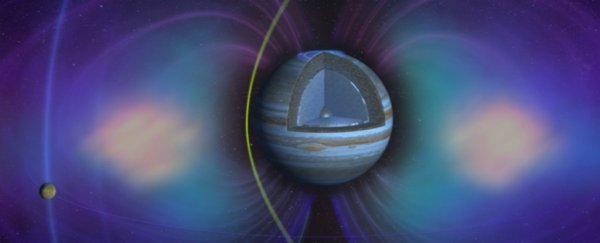The biggest space event of the year is happening soon. On July 4, NASA's un-crewed Juno spacecraft will end its nearly five-year journey through space and embark on a mission to study the planet Jupiter like never before.
But first, the spacecraft must lock on to Jupiter into what's called a polar orbit. This is the most dangerous part of the entire Juno mission, and is what NASA will be watching instead of fireworks this holiday weekend.
As Juno approaches its destination on July 4, Jupiter's tremendous gravitational pull will accelerate the spacecraft to blazing speeds of more than 150,000 mph (241,000 km/h), making Juno one of the fastest human-made objects ever built.
After reaching a max speed of 165,000 mph (266,000 km/h) – fast enough to fly around Earth in 9 minutes – Juno will slam on the breaks by firing its engines. This is where things get tricky.
The Juno spacecraft weighs 3,500 pounds (1,600 kg) and will be barreling through space at 215 times the speed of sound. To slow down, the engines will fire for 35 minutes straight, burning through 17,600 pounds (7,900 kg) of fuel in the process.
If all goes according to plan, this perilous manoeuvre will place Juno into orbit around Jupiter, where the spacecraft will remain over the next 18 months, providing an unprecedented look at Jupiter's powerful gravitational and magnetic fields.
If something goes wrong, the US$1.13 billion mission will shoot past Jupiter, into deep space with no chance of return.
NASA only has one shot at this. The engine burn will start at 11:18pm ET on July 4.
You can watch the action at NASA unfold beginning at 10:30pm ET, as engineers monitor Juno's instruments and anxiously await confirmation of the burn's success. Witness history in the making on NASA TV or below:

This article was originally published by Business Insider.
More from Business Insider:
